CONSORTIUM CASE STUDIES & PROJECTS
The Therapeutics Consortium agreement enables collaborative research between Consortium companies and academics across Cambridge. There are ongoing projects across eleven Departments and Institutes of the University, and at the Babraham Institute. We have 27 collaborative projects between academics and pharma companies in total, 16 of which are highlighted below. The projects are broad in remit and can include access to compounds, datasets or know-how in a particular technique. In some cases, an industry scientist has come to work in the academic’s lab, and in others an academic post has been funded specifically for the project. The emphasis in all our collaborations is on mutual sharing of expertise. Please contact us if you are interested in finding out more.
CASE STUDIES
SHIONOGI PHARMACEUTICALS
Shionogi Pharmaceuticals joined the Milner Therapeutics Consortium in 2016 and has been involved in 5 academic–industry collaborations to date.
For a company based in Japan, enabling scientists to visit and work with Cambridge academics is a key benefit, and Martin Welch (Department of Biochemistry) has collaborated with Shionogi in this way on a project centred around infectious disease. “This has been a brilliant project and it was great to have a postdoc from Shionogi visiting the lab. They contributed substantially to the project and the lab,” Martin commented.
Angela Roberts (Department of PDN) and Trevor Robbins (Department of Psychology), experts in networks of the frontal lobes and basal ganglia involved in cognition and behaviour, initiated collaborations with Shionogi to test novel and first-inclass compounds on specific models of cognition and behaviour. A Shionogi scientist worked in the Robbins lab, and this has fostered a longer-term working relationship. This project was extended in 2019 and the Shionogi scientist — now a team leader in Japan — is initiating a new project with Trevor Robbins and Amy Milton looking at the impact of specific drugs on cognition and behaviour.
This exchange of scientists is not just one way: a Shionogi iCASE studentship with David Belin (Department of Psychology) focused on biobehavioural markers of addiction will see a PhD student from the Belin lab visiting Shionogi in Japan later this year. Enabling Shionogi scientists to experience the culture in Cambridge and vice versa brings substantial value, breaking down barriers between academia and industry.
As a research-intensive pharmaceutical company, we believe that academic collaborations and partnerships are critical in discovering innovative medicines that ultimately benefit patients. Via the Milner Therapeutics Consortium, we have developed a number of research collaborations in Cambridge, which already delivered valuable outcomes for both parties. We would like to further expand and deepen our activities in Cambridge as a partner of choice for future collaborations. – Ryuichi Kiyama, SVP, Head of Pharmaceutical Research Division

NEUROSCIENCE: Autophagy targets in neurodegeneration
Autophagy is a major protein and organelle recycling and degradation pathway and is increasingly being targeted as a therapeutic strategy in neurodegeneration. But the development of clinically viable modulators of autophagy requires better understanding of target relevance across mechanistic and disease models. This project aims to tackle this, drawing on the combined experience of an academic-industry team to assess a number of targets in complementary compound and genetic screening assays and neuronal disease models, to uncover robust targets for prioritization. Arising from an industry-led workshop that brought together key academic and industry opinion leaders within the Milner Therapeutics Consortium, this project includes Eisai, Astex and Eli Lilly and Company and academic teams from three institutes across Cambridge – John Skidmore’s team at the ALBORADA Drug Discovery Institute, Nicholas Ktistakis’s group at the Babraham Institute and Alex Whitworth’s group at the MRC Mitochondrial Biology Unit – each of whom have complementary expertise in autophagy mechanisms and models. Read more here.

DISEASE MODELS: Novel therapeutics for liver disease
Non-alcohol fatty liver disease/non-alcoholic steatohepatitis (NAFLD/NASH) are becoming a leading cause of liver disease in developed countries and, in many cases, organ transplantation is the only available treatment. Development of new therapies is currently impaired by the absence of physiologically relevant disease models. To address this limitation, Ludovic Vallier (Wellcome MRC Cambridge Stem Cell Institute) is working with GlaxoSmithKline and Ferring Pharmaceuticals to identify and validate new therapeutic targets in liver disease through CRISPR/Cas9-based genetic screens. Of particular interest, this consortium aims to identify new genes protecting liver cells against toxicity induced by fatty acids. This project will bring together a novel in vitro human model for NAFLD/NASH established in the Vallier group and NASH/NAFLD expertise from the two companies.
This consortium provides a unique opportunity to combine our expertise on disease modelling with the therapeutic knowledge from the pharmaceutical industry. This combination will allow the identification of new target genes for drug development against a major unmet clinical need.

PROJECTS ESTABLISHED THROUGH THE MILNER CONSORTIUM
Dynamic RBPome of RNA tool molecules
Prof Kathryn Lilley and Dr. Alex Borodavka (Department of Biochemistry) are combining their biophysical and biochemical expertise with the expertise of research scientists at Pfizer to explore the application of RNA tool molecules that could potentially support the drug development process.

Improving the efficacy of CAR-T cells
This collaboration between Dr Martin Turner (Babraham Institute), Dr Mike Chapman (MRC Toxicology Unit) and AstraZeneca aims to validate specific RNA-binding proteins for their ability to improve CAR-T cell potency and durability, with potential relevance for cellular immunotherapy. The collaboration will utilize the complementary expertise of the teams and provide access to key equipment at AstraZeneca to address how deletion of RNA-binding proteins can enhance CAR-T cells potency using in vitro human cell models and in vivo translational mouse models.
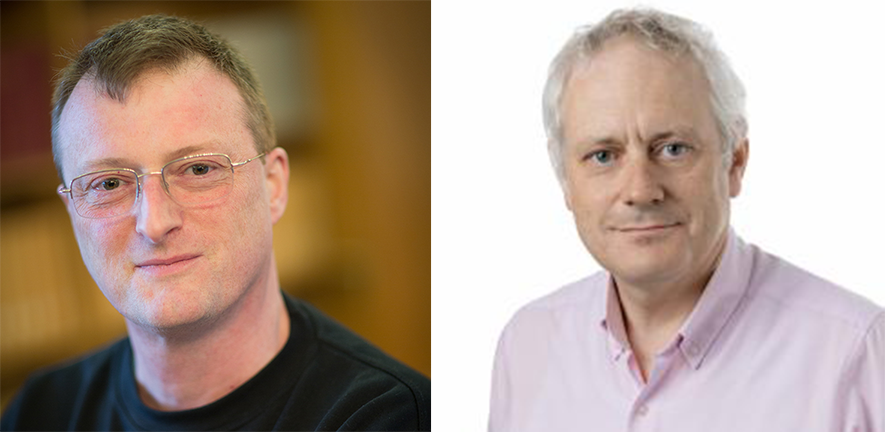

ONCOLOGY: Metabolic imaging to identify drug combinations that overcome drug resistance. Metabolic imaging methods for detecting early engagement of a drug with its target are useful in the treatment of patients with cancer, as they can rapidly indicate a potential response to a drug rather than waiting for a reduction in or stabilisation of tumour growth. Susana Ros and Kevin Brindle are working with AstraZeneca to investigate the contribution that metabolic imaging with hyperpolarized 13C-labelled substrates can have in identifying drug combinations that might alleviate acquired resistance to PI3K alpha inhibitors in pre-clinical breast cancer models.
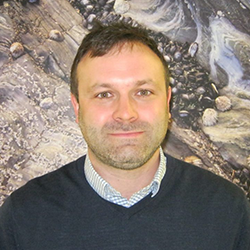
DISEASE MODELS: Use of immortalized human adipocytes to identify novel regulators of GLUT4 trafficking. Insulin increases glucose uptake from blood into fat (and muscle) cells through the translocation of the glucose transporter GLUT4 from inside the cells to the plasma membrane. In patients with type 2 diabetes, cells become resistant to the effects of insulin, meaning that levels of glucose in the blood continue to rise, damaging essential organs such as the eyes and heart. Daniel Fazakerley and David Gershlick are working with AstraZeneca to develop a model that will allow the regulation of GLUT4 by insulin to be better understood and potentially lead to the development of new drugs for the treatment of patients with type 2 diabetes.


ONCOLOGY: Use of saturation gene editing to identify new druggable protein domains. The search for novel therapeutics can be hampered by a lack of knowledge regarding functional protein domains in disease targets of interest. Using gene editing to introduce saturation levels of mutations throughout the coding region of genes of interest, Mathew Garnett is working with Astex Pharmaceuticals to identify new druggable domains in proteins that impact the survival of cancer cells.

DISEASE MODELS: An organoid library of the human endometrium
The proper function of the endometrium is fundamental to the establishment and maintenance of pregnancy, but there are key gaps in our understanding of its fundamental biology. Margherita Yayoi Turco (Dept Pathology) is collaborating with Ferring Pharmaceuticals to develop lineage-specific organoid models of the endometrium and determine the signalling pathways that are important for these. Together this will provide insights into epithelial, stromal and immune cell interactions throughout the monthly cycle and inform development of better endometrial co-culture models for understanding fertility.
CHEMISTRY: Protein cage synthesis for improved cryoEM
A key challenge in cryoEM – increasingly the method of choice for determining the 3D structure of a protein – is the ability to image proteins from several angles and thereby reconstruct an accurate structure. Jonathan Nitschke (Yusuf Hamied Dept of Chemistry) is collaborating with Astex Pharmaceuticals to overcome this by designing and synthesizing metal-organic cages for encapsulating proteins during structural imaging. Together with Astex’s expertise in structural biology, this has potential to improve the resolution of protein structures that can be revealed with this essential method.
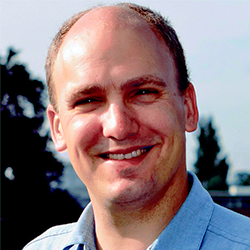

CHEMISTRY: The use of artificial intelligence technologies in fragment-based drug discovery. Astex are working with Lucy Colwell (Dept Chemistry) to develop machine learning methods for fragment-based drug discovery (FBDD). FBDD can be used to identify low molecular weight chemical starting points to generate new drug leads. It has advantages over conventional high-throughput screening because it enables the sampling of chemical space more effectively with fewer compounds. The machine learning methods will be trained on existing datasets from Astex’s fragment screening campaigns to help understand what drives fragment binding. Ultimately the aim is to use these models to predict the binding of, and propose follow up, fragments. Experimental data and expertise from Astex will be used to inform the methods and to validate outputs. This project will provide an in-depth understanding of the utility of machine-learning methods in the FBDD field.
ONCOLOGY: Identifying potential therapies for early squamous lung cancer. Rational chemoprevention strategies are needed for intervention in patients at high risk of lung cancer. To better understand this disease, and devise potential approaches to detection and treatment, Frank McCaughan (Depts of Medicine and Biochemistry) has developed a novel model of early squamous lung cancer that recapitulates the key molecular and phenotypic features of the disease. In collaboration with the Lung Cancer Initiative at Johnson & Johnson (LCI), this organotypic model of bronchial dysplasia (OTC) will be used as a screening platform for potential therapeutic targets, using both compounds from Janssen R&D and genetic analysis with CRISPR and inducible shRNA.

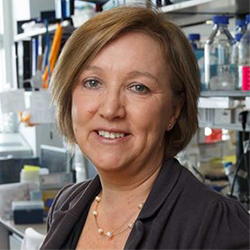
ONCOLOGY: Strategies to influence T-cell mediated tumour killing. The majority of immune-oncology (IO) therapies are focused on enhancing the activity of tumour-killing CD8+ cytotoxic T-cells. Gillian Griffiths (CIMR and Dept Medicine) is working with AstraZeneca to determine pathways that enhance or reduce the ability of cytotoxic T cells to kill tumour cells.
ONCOLOGY: Investigating how different sub-types of breast cancer respond to different treatments. Breast cancer consists of a number of different genomic sub-types which makes effective treatment challenging and prognosis variable. Some sub-types respond well to particular drugs or drug combinations whereas others are resistant. Carlos Caldas (CRUK Cambridge Institute) is collaborating with AstraZeneca to investigate the different responses of breast cancer sub-types, using a bio-bank pioneered in his lab of breast cancer patient-derived tumour cells and tissues. Read more »
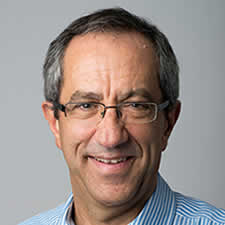

SIMON COOK ONCOLOGY: Investigating mechanisms of ERK1/2 inhibition
Simon Cook (Babraham Institute) has collaborated with Astex to investigate the significance of different modes of ERK1/2 inhib-ition in cell lines and the consequences for cancer cell growth inhibition and adaptive resistance. Targeting the ERK1/2 pathway with BRAF or MEK inhibitors in melanoma has been very successful but many cancers do not respond or adapt to current BRAF or MEK inhibitors by reinstating ERK1/2 signalling. This project involved a detailed study of how different ERK inhibitors alter downstream pathway signalling, and revealed that a dual-mechanism inhibitor may provide more prolonged pathway inhibition, with potential implications for ongoing inhibitor development in the clinic.
PUBLICATIONS
Sipthorp J et al. Bioconjugate Chem. (2017)
Kidger A et al. Pharmacol Ther. (2018) (Review)
Kidger et al. Mol. Cancer Therapy (2019)
ONCOLOGY: Insights into the use of PROTAC molecules as a therapeutic strategy. Protacs (proteolysis targeting chimeric molecule), heterobifunctional nanomolecules that can recruit proteins to the ubiquitin-proteasome machinery for degradation, are being tested as a potential strategy for the treatment of cancer. Tony Kouzarides (Milner Institute and Gurdon Institute) is working with GSK to assess how a novel PROTAC molecule against a key epigenetic regulator affects cell proliferation, viability and division, and changes in gene expression, in a human cell model of acute myeloid leukaemia.
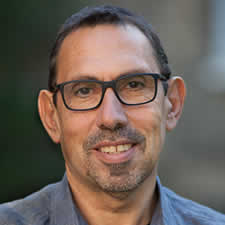

ONCOLOGY: Uncovering how Myc-mediated gene expression supports the tumour environment. Gerard Evan is collaborating with AstraZeneca to examine the role of the oncogene Myc in supporting the tumour environment.
ONCOLOGY: Strategies to prevent the progression to pancreatic adenocarcinoma. In a second project, Cathy Wilson working with Gerard Evan will collaborate with AstraZeneca to test the impact of inhibiting neutrophil influx on Myc-induced transition from pre-invasive pancreatic intraepithelial neoplastic lesions to pancreatic adenocarcinoma.
ONCOLOGY: Frank McCaughan (Depts Medicine and Biochemistry) has a novel organotypic model of early squamous lung cancer and is collaborating with AstraZeneca to determine novel targets for preventing tumorigenesis.


ONCOLOGY: Mechanisms of resistance to ALK inhibition in neuroblastoma. Suzanne Turner (Dept Pathology) is working with AstraZeneca to build on her previous in vitro studies indicating that inhibition of additional factors synergize with effects of ALK inhibition in neuroblastoma.
ONCOLOGY: Capturing the Early Stages of Acute Myeloid Leukaemia to Evaluate New Therapeutics. Bertie Göttgens (Stem Cell Institute) is working with AstraZeneca to test how combined therapeutic strategies can affect sequential disease stages of acute myeloid leukaemia including pre-leukaemia development in progenitor cells and development of resistance mechanisms against treatments.

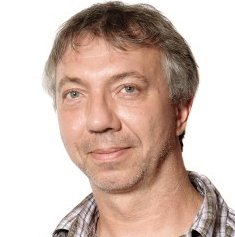
INFECTIOUS DISEASE: Advancing disease understanding and drug discovery in infectious diseases. Pseudomonas aeruginosa — a pathogen that is lethal for many patients in hospital intensive care units — is also frequently associated with chronic airway infections in cystic fibrosis patients. The mechanism of infection is through the Type III Secretion (T3S) system, which is therefore a target for intervention strategies aiming to suppress pathogen virulence. The protein PcrV has been shown to be critical to virulence via the T3S system and antibodies against PcrV are being pursued as a potential therapeutic strategy. There are usually a number of microbial species present in an infection in addition to P. aeruginosa and it is also possible that inhibition of the T3S system may inadvertently increase antimicrobial resistance. Martin Welch (Dept Biochemistry) is therefore working with Shionogi to better understand i) the molecular mechanisms underpinning anti-PcrV antibody action, ii) how to quantify antibody action and iii) the wider consequences of inhibiting PcrV function on other cell processes. Knowledge, antibodies and assays are being shared between the two partners and a senior research scientist from Shionogi is working alongside academic scientists in the Welch lab to enable efficient transfer of knowledge and technical skills back in-house to Shionogi in Japan. Read more »
CNS DISEASES: Improving drug discovery in CNS diseases. Trevor Robbins (Dept of Psychology) and Angela Roberts (Dept of PDN Cambridge), experts in the brain networks of the frontal lobes and their associated neurochemical systems that mediate cognition and behaviour, are working with Shionogi to test novel and first-in-class compounds on specific models of cognition and behaviour in rodents and marmoset monkeys. The combination of world leading academic knowledge and expertise in drug discovery will enable the development of new preclinical methods and models to evaluate cognitive and emotional functions that will improve candidate selection for mental health disorders. Read more »

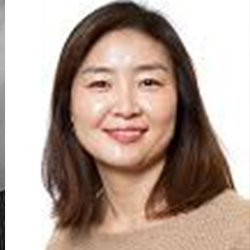

DISEASE MODELS: Elucidating signalling pathways that drive lung development in improved organoid models. Emma Rawlins (Gurdon Institute) and Joo Hyeon Lee (Stem Cell Institute) are collaborating with AstraZeneca to uncover pathways that regulate growth and differentiation of lung progenitor cells.
CARDIOVASCULAR & METABOLISM: A drug re-purposing strategy for treatment of angina. Anthony Davenport (Dept of Medicine) is working with AstraZeneca to selectively block signalling by the potent vasoconstrictor endothelin that contributes to vasospasm in small coronary arteries in patients with angina.

